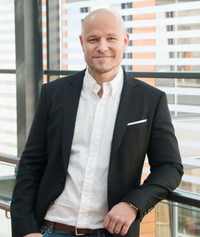University Medical Center (UMC) Mainz
Maria Felicia Basilicata Christian Behl Benedikt Berninger Luciana Berod Tobias Bopp Andreas Daiber Sven Danckwardt Carsten Deppermann Stephan Grabbe Thomas Hofmann Thomas Kindler Daniela Kramer Daniela Krause Dilja Krueger-Burg Michael Kühn Beat Lutz Johannes Mayer Wolfram Ruf Katrin Schäfer Susann Schweiger Natalia Soshnikova Tim Sparwasser Oliver Tüscher Sara Vieira-Silva Ari Waisman Philipp Wild Jennifer Winter Fatemeh Zare-ShahnehImmune regulation in aging
Deregulated immune responses against harmless antigens or even self-antigens can cause allergies and autoimmune diseases, which are more common in the global North. On the other hand, innate and adaptive immunodeficiencies increase the risk of infections and the development of cancers. Age-related deviations of the immune system contribute to a higher probability of infections, cancer and autoimmunity in the elderly. These age-related diseases share some basic mechanistic pillars that largely converge on defects especially in T cell responsiveness.
While numbers and functionality of conventional CD8+ and CD4+ T cells steadily decrease, the number of a subpopulation of T cells, namely CD4+FOXP3+ regulatory T (TREG) cells, which are known for their immunoregulatory capabilities seems to steadily increase during aging. Yet, little is known about their role in immune aging and in the development of age-related diseases. In my lab, we are aiming at deciphering the cellular and molecular mechanisms of TREG cell development and function during aging and in health and disease.
Positions held
- Since 2019: Full Professor (W3) and Chair, Institute for Immunology, Johannes Gutenberg-University Mainz
- 2012 - 2019: Associate Professor (W2) for “Molecular immunology”, University Medical Center, Johannes Gutenberg-University Mainz
- 2008 - 2012: Head of a scientific working group, Institute for Immunology, University Medical Center, Johannes Gutenberg-University Mainz
- 2006 - 2008: Postdoctoral Fellow, Institute for Immunology, University Medical Center, Johannes Gutenberg-University Mainz
Education
- 2003 - 2006: Dr. rer. nat. (“magna cum laude”), Institute of Immunology, University Medical Center, Johannes Gutenberg-University Mainz, Prof. Edgar Schmitt
- 1997 - 2003: Biology, Diploma, Johannes Gutenberg-University Mainz
Selected publications by Tobias Bopp
Johann K*, Bohn T*, Shahneh F*, Luther N, Birke A, Jaurich H, Helm M, Klein M, Raker VK, Bopp T#, Barz M#, Becker C#. Therapeutic melanoma inhibition by local micelle-mediated cyclic nucleotide repression. Nat Commun 2021 12(1):5981. *Joint first authors, #corresponding authors Link
Bohn T, Rapp S, Luther N, Klein M, Bruehl TJ, Kojima N, Aranda Lopez P, Hahlbrock J, Muth S, Endo S, Pektor S, Brand A, Renner K, Popp V, Gerlach K, Vogel D, Lueckel C, Arnold-Schild D, Pouyssegur J, Kreutz M, Huber M, Koenig J, Weigmann B, Probst HC, von Stebut E, Becker C, Schild H, Schmitt E, Bopp T. Tumor immunoevasion via acidosis-dependent induction of regulatory tumor-associated macrophages. Nat Immunol. 2018 Dec 19(12):1319-1329. Link
Ulges A*, Witsch EJ*, Pramanik G, Klein M, Birkner K, Bühler U, Wasser B, Luessi F, Stergiou N, Dietzen S, Brühl TJ, Bohn T, Bündgen G, Kunz H, Waisman A, Schild H, Schmitt E, Zipp F, Bopp T. Protein kinase CK2 governs the molecular decision between encephalitogenic TH17 cell and Treg cell development. Proc Natl Acad Sci U S A. 2016 Sep 6;113(36):10145-50. *joint first authors (open access) Link
Ulges A, Schmitt E, Becker C, Bopp T. Context- and Tissue-Specific Regulation of Immunity and Tolerance by Regulatory T Cells. Adv Immunol. 2016 132:1-46. Link
Ulges A, Klein M, Reuter S, Gerlitzki B, Hoffmann M, Grebe N, Staudt V, Stergiou N, Bohn T, Brühl T-J, Muth S, Yurugi H, Rajalingam K, Bellinghausen I, Tuettenberg A, Hahn S, Reißig S, Haben I, Zipp F, Waisman A, Probst HC, Beilhack A, Buchou T, Filhol-Cochet O, Boldyreff B, Breloer M, Jonuleit H, Schild H, Schmitt E, Bopp T. Protein kinase CK2 enables regulatory T cells to suppress excessive TH2 responses in vivo. Nat Immunol 2015 16:267–275 Link
